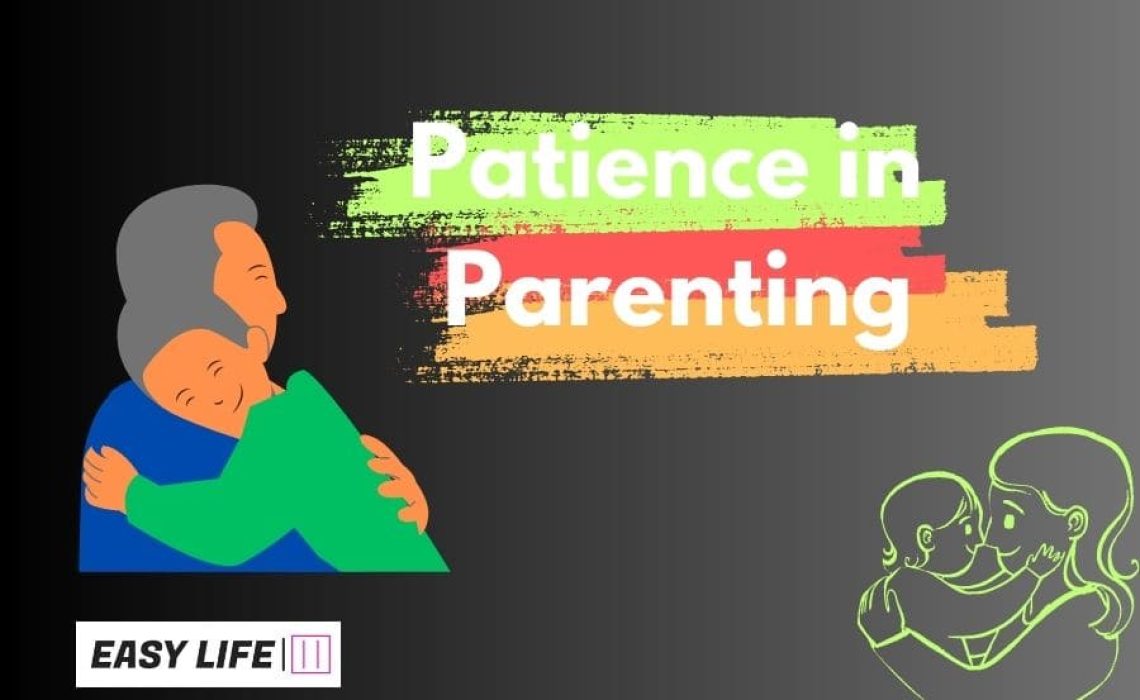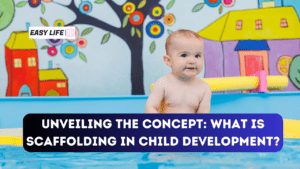Parenting is often likened to a journey, filled with milestones, detours, and sometimes, unexpected challenges. Amidst the varying terrain of this journey, one virtue stands out as especially invaluable – patience. As parents, patience can guide us through difficult phases, empower us to nurture our children’s growth and help us cultivate a positive environment for parenting.
Patience in parenting isn’t merely about enduring tantrums or waiting out a child’s resistance to eat their vegetables. It’s a multifaceted virtue, involving empathy, understanding, self-control, and perseverance. It’s about maintaining composure in the face of trials, taking a deep breath when things don’t go as planned, and displaying empathy towards a child’s evolving needs and emotions.
In essence, patience is about planting seeds – seeds of understanding, compassion, and resilience. And much like a garden, a parenting environment thrives when tended to with care, positivity, and yes, patience. This blog post will delve into the importance of patience in parenting and explore ways to foster a positive environment that facilitates patience and understanding. Let’s start this journey of cultivating patience – one seed at a time.
Table of Contents
Toggle1. Understanding Patience in Parenting
Patience in parenting is a multidimensional concept, encompassing a spectrum of behaviours, attitudes, and responses. It’s more than just the ability to wait or tolerate; it’s a proactive approach that helps nurture healthier relationships and facilitates effective parenting.
A. Defining Patience in Parenting
- Patience as Empathy: Patience involves a deep understanding and empathy towards a child’s developmental stage, feelings, and unique personality. It means acknowledging that children, like adults, have good and bad days and that their behaviours and emotions are a part of their learning and growth.
- Patience as Self-Control: Patience also denotes self-control. It’s about managing our own emotions and reactions, even when our patience is tested to its limits. It involves choosing thoughtful responses over reactive ones and demonstrating behavior that we want our children to emulate.
- Patience as Perseverance: Patience signifies perseverance – the ability to persist in nurturing, guiding, and supporting, despite the inevitable challenges and setbacks that parenting entails.
B. The Importance of Patience in Parenting
- Facilitates Healthy Communication: Patience fosters an environment where children feel safe to express their feelings and thoughts, facilitating healthier communication.
- Promotes Positive Behavior: When parents model patience, children learn to handle their own emotions and challenges more effectively, promoting positive behaviour.
- Strengthens Parent-Child Bond: Patience builds trust and understanding, strengthening the bond between parent and child.
C. The Consequences of Impatience
Impatience, while a natural human response, can inadvertently create stress, miscommunication, and conflict. It’s essential to recognize when our patience is wearing thin and take steps to restore our emotional balance.
Understanding patience in parenting sets the foundation for cultivating a positive environment where both parent and child can thrive. It’s about nurturing with love, guiding with understanding, and growing together through each step of the parenting journey.
2. The Impact of a Positive Environment on Parenting
Creating a positive environment in the home is not just about setting a pleasant ambience; it’s about fostering an emotional climate that encourages growth, communication, understanding, and resilience. This environment plays a significant role in parenting and influences the overall dynamics of the parent-child relationship.
A. The Correlation Between a Positive Environment and Effective Parenting
- Encourages Open Communication: A positive environment encourages open and honest communication, which is essential for effective parenting. It allows parents and children to express their thoughts, feelings, and concerns freely.
- Promotes Emotional Well-being: Positive environments promote emotional well-being for both parents and children. Parents feel supported and less stressed, which can enhance their patience and parenting skills. Children, in turn, develop a sense of security and confidence.
- Fosters Learning: A positive environment is conducive to learning. It provides opportunities for parents to teach important life values such as respect, kindness, empathy, and resilience.
B. The Role of a Positive Environment in Cultivating Patience
- Reduces Stress: A positive environment reduces stress, a common trigger for impatience. When parents feel less stressed, they are more likely to respond to their children patiently and thoughtfully.
- Encourages Positive Interactions: In a positive environment, interactions between parents and children are more likely to be constructive and positive, which can encourage patience.
- Facilitates Understanding: A positive environment fosters an atmosphere of understanding and empathy, key components of patience.
A positive environment goes hand in hand with patience in parenting. It lays the groundwork for nurturing relationships, understanding emotions, and cultivating the patience necessary for effective parenting. Just as a plant thrives best in a healthy environment, so does the relationship between parent and child in a positive and nurturing atmosphere.
3. Strategies for Cultivating Patience in Parenting
Developing patience is an ongoing process that requires practice and self-awareness. Here are some strategies that can help cultivate patience in parenting:
A. Mindfulness
- Be Present: Practice being present at the moment. This can help you respond to your child’s needs more effectively and patiently.
- Deep Breathing: If you feel your patience wearing thin, take a few deep breaths. This simple act can help calm your mind and body, allowing you to respond with more patience.
B. Self-Care
- Take Time for Yourself: Ensure you are taking care of your own needs. A well-rested, healthy parent is more likely to be a patient parent.
- Engage in Activities You Enjoy: Make time for hobbies or activities that you enjoy. This can help reduce stress and increase your capacity for patience.
C. Setting Realistic Expectations
- Understand Your Child’s Development: Have realistic expectations of your child’s behaviour based on their age and development. This can help prevent frustration and impatience.
- Practice Acceptance: Accept that there will be good days and challenging days in parenting. Understanding this can help you remain patient during more challenging times.
D. Positive Self-Talk
- Practice Positivity: Replace negative thoughts with positive ones. Remind yourself of your ability to handle challenging situations patiently.
- Celebrate Small Victories: Acknowledge your progress and celebrate your victories, no matter how small. This can help reinforce your efforts to be more patient.
Patience is like a muscle; the more you exercise it, the stronger it gets. By implementing these strategies, you can start strengthening your patience and cultivate a more positive and fulfilling parenting journey.
4. Ways to Foster a Positive Environment for Parenting
Creating a positive environment is a proactive approach to parenting. It involves conscious efforts to establish an atmosphere of respect, empathy, openness, and love. Here are some ways to foster such an environment:
A. Maintaining Open Communication
- Encourage Expression: Encourage your children to express their feelings and thoughts openly. Let them know their voices are heard and valued.
- Practice Active Listening: When your child speaks, give them your undivided attention. Show interest in their words and respond empathetically.
B. Promoting Positivity
- Positive Reinforcement: Use positive reinforcement to encourage desirable behaviours. Recognize and appreciate your child’s efforts and achievements.
- Mindful Language: Be mindful of the language you use around your children. Try to maintain a positive tone and use words that foster confidence and positivity.
C. Managing Stress
- Healthy Coping Mechanisms: Teach your children healthy ways to cope with stress. This could include exercises, hobbies, mindfulness, or talking about their feelings.
- Model Stress Management: Show your children how you manage your own stress. This not only provides them with practical strategies but also reassures them that stress is a normal part of life and can be effectively managed.
D. Nurturing Relationships
- Spend Quality Time: Spend quality time with your children. This strengthens your bond and creates a loving and secure environment.
- Display Affection: Show affection to your children. Hugs, kind words, and acts of love can go a long way in creating a positive environment.
Creating a positive environment for parenting is not an overnight task. It requires continuous effort, adaptability, and a lot of patience. But the rewards – a strong parent-child bond, a happy home, and the overall well-being of your children – are indeed priceless.
5. Dealing with Challenges and Setbacks
Despite our best efforts, challenges and setbacks are an inevitable part of parenting. How we deal with these situations can significantly impact our patience and the overall family environment.
A. Acknowledging Challenges
- Be Honest with Yourself: It’s okay to acknowledge that you’re finding a situation challenging. Admitting to the difficulty is the first step towards finding a solution.
- Understand that Challenges are a Part of Parenting: Parenting is a complex task filled with highs and lows. Recognizing this can help you maintain patience during tough times.
B. Strategies for Dealing with Setbacks
- Reflect and Learn: When faced with setbacks, take a moment to reflect on what happened. What can you learn from the situation? How can you handle it differently next time?
- Seek Support: Don’t hesitate to seek support when needed. This could be from a spouse, family, friends, or professional counsellors. Remember, asking for help is a sign of strength, not weakness.
C. Maintaining Patience in the Face of Challenges
- Pause and Breathe: When a situation tests your patience, take a moment to pause and breathe. This can help reset your emotions and allow you to respond more calmly.
- Practice Self-Compassion: Be gentle with yourself. Everyone makes mistakes. Instead of dwelling on them, focus on what they can teach you.
Navigating challenges and setbacks with patience and grace is not easy, but it’s an essential part of parenting. Every challenge is an opportunity to learn, grow, and become a more patient and understanding parent. Remember, the goal is progress, not perfection.
Conclusion
Patience is indeed a virtue, especially in the realm of parenting. As we navigate through the complex journey of raising our children, patience serves as a guiding light, illuminating our path with understanding, empathy, and calmness. It helps us to connect with our children on a deeper level, to guide them with love and respect, and to handle the inevitable challenges of parenting with grace.
Cultivating a positive environment is integral to nurturing patience in our parenting approach. A positive environment not only fosters effective communication and emotional well-being, but it also serves as a fertile ground where the seeds of patience can be planted and nourished.
Remember, cultivating patience and a positive environment isn’t a one-time task, but a continuous process. It’s about making conscious efforts each day to respond with understanding, to create a positive atmosphere, and to nurture our relationships with our children. It’s about celebrating our progress, learning from our setbacks, and continually striving to be the best parents we can be.
In the garden of parenting, patience is indeed a precious seed. And as we water this seed with love, understanding, and positivity, we’ll witness the blossoming of stronger parent-child relationships, a harmonious home environment, and the overall well-being of our children. Happy parenting!
References
In an actual blog post, this section would list the sources of any specific data, quotes, or material drawn from external resources, in order to give credit to the original authors and allow readers to further explore the topics. As this blog post is a general discussion and doesn’t refer to any specific external sources, there are no references to list in this case.
However, if you’re planning to do further research or reading on the topic, here are some resources that you might find helpful:
- Gottman, J. M., & Declaire, J. (1997). The heart of parenting: Raising an emotionally intelligent child. New York: Simon & Schuster.
- Siegel, D. J., & Bryson, T. P. (2012). The whole-brain child: 12 revolutionary strategies to nurture
- Lerner, C., & Parlakian, R. (2016). Patience: How to Tame Your Inner Tiger. Zero to Three.
- MacKenzie, R. J. (2001). Setting limits with your strong-willed child: Eliminating conflict by establishing clear, firm, and respectful boundaries. New York: Three Rivers Press.
- Nelsen, J. (2006). Positive discipline: The classic guide to helping children develop self-discipline, responsibility, cooperation, and problem-solving skills. New York: Ballantine Books.
Remember, it’s essential to acknowledge and respect the work of others when writing a blog. Always make sure to cite your sources appropriately.










1 thought on “Mastering Patience in Parenting: The Parenting Game-Changer”
Pingback: Crafting the Ideal Parenting Plan: A Comprehensive Guide - 2023